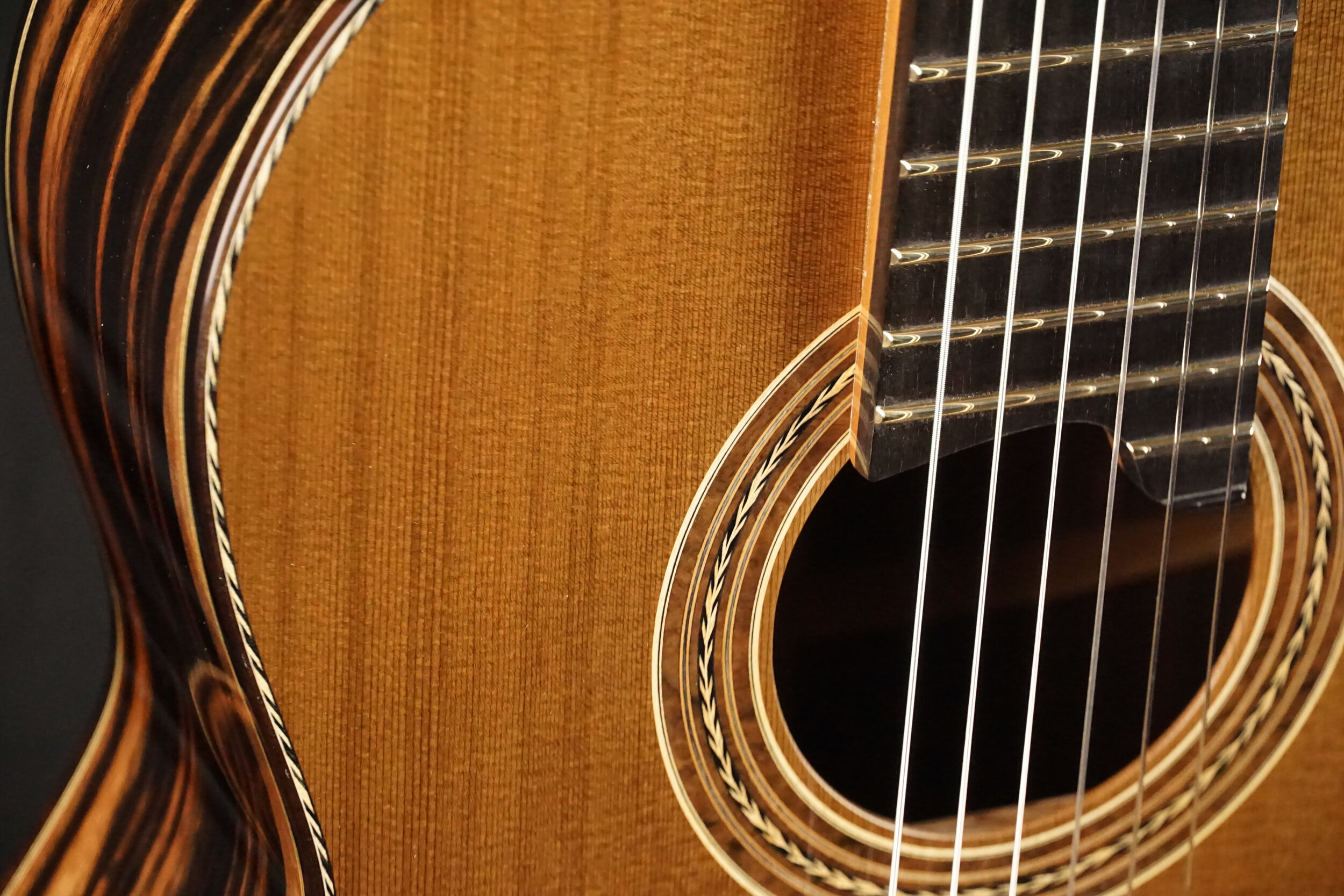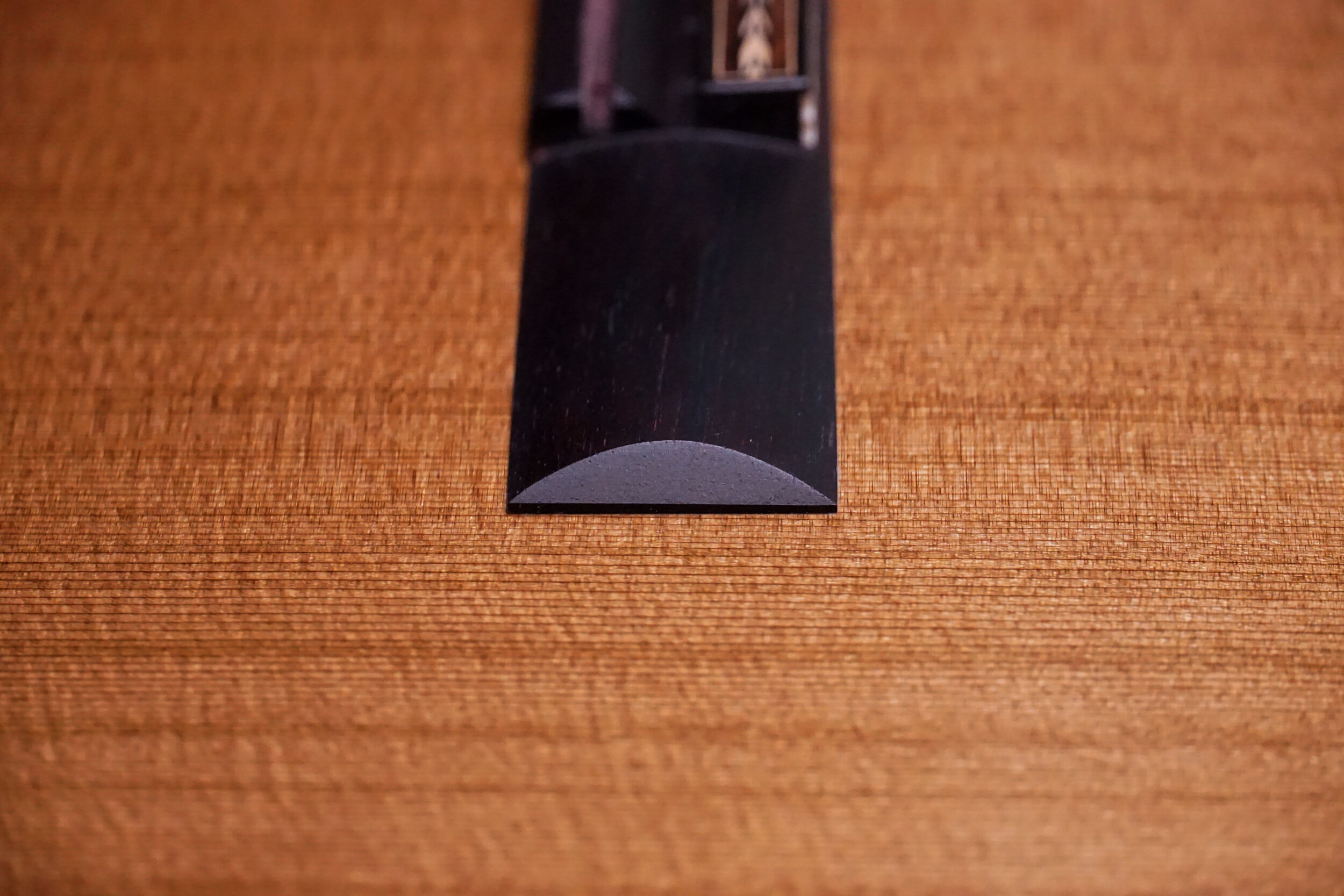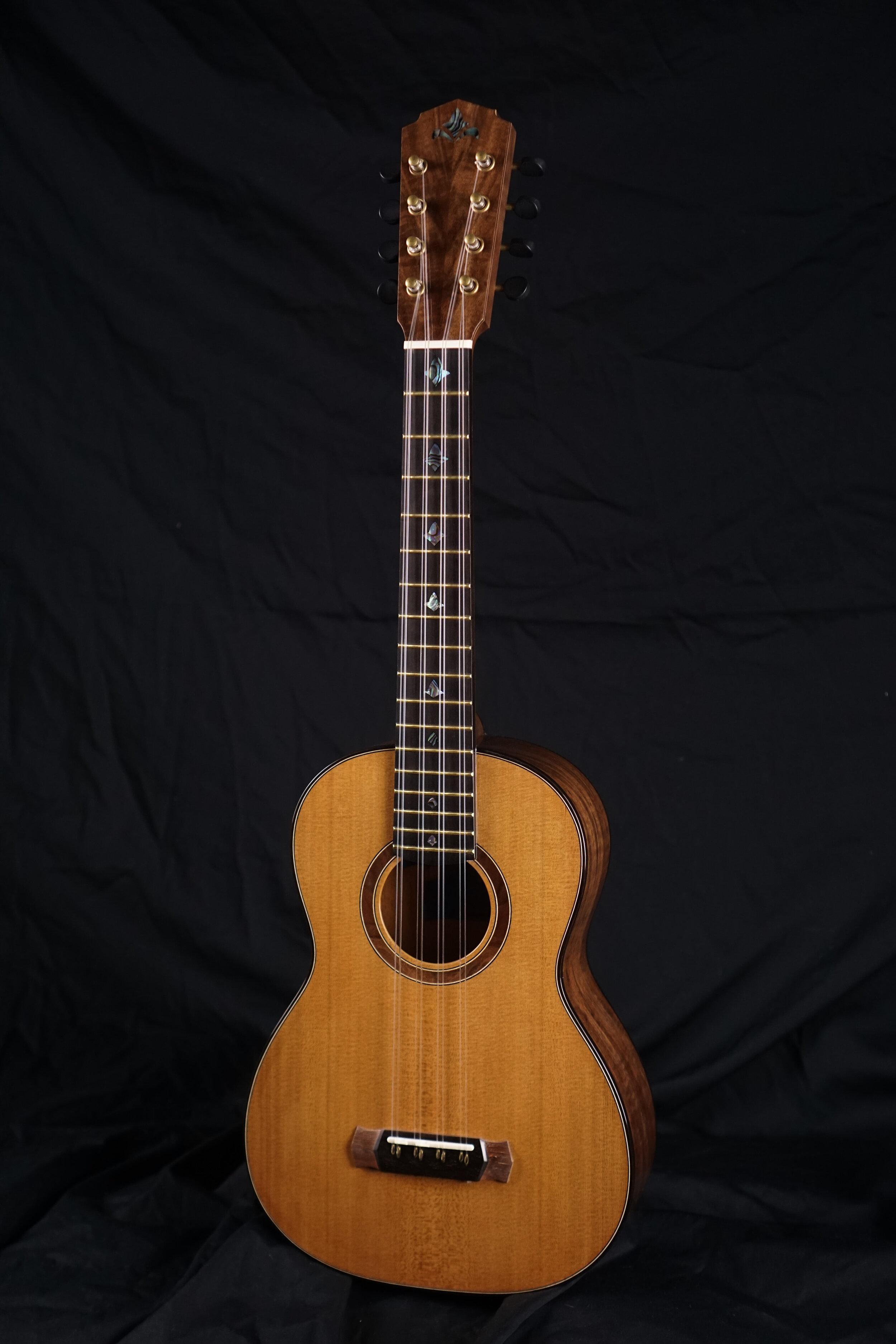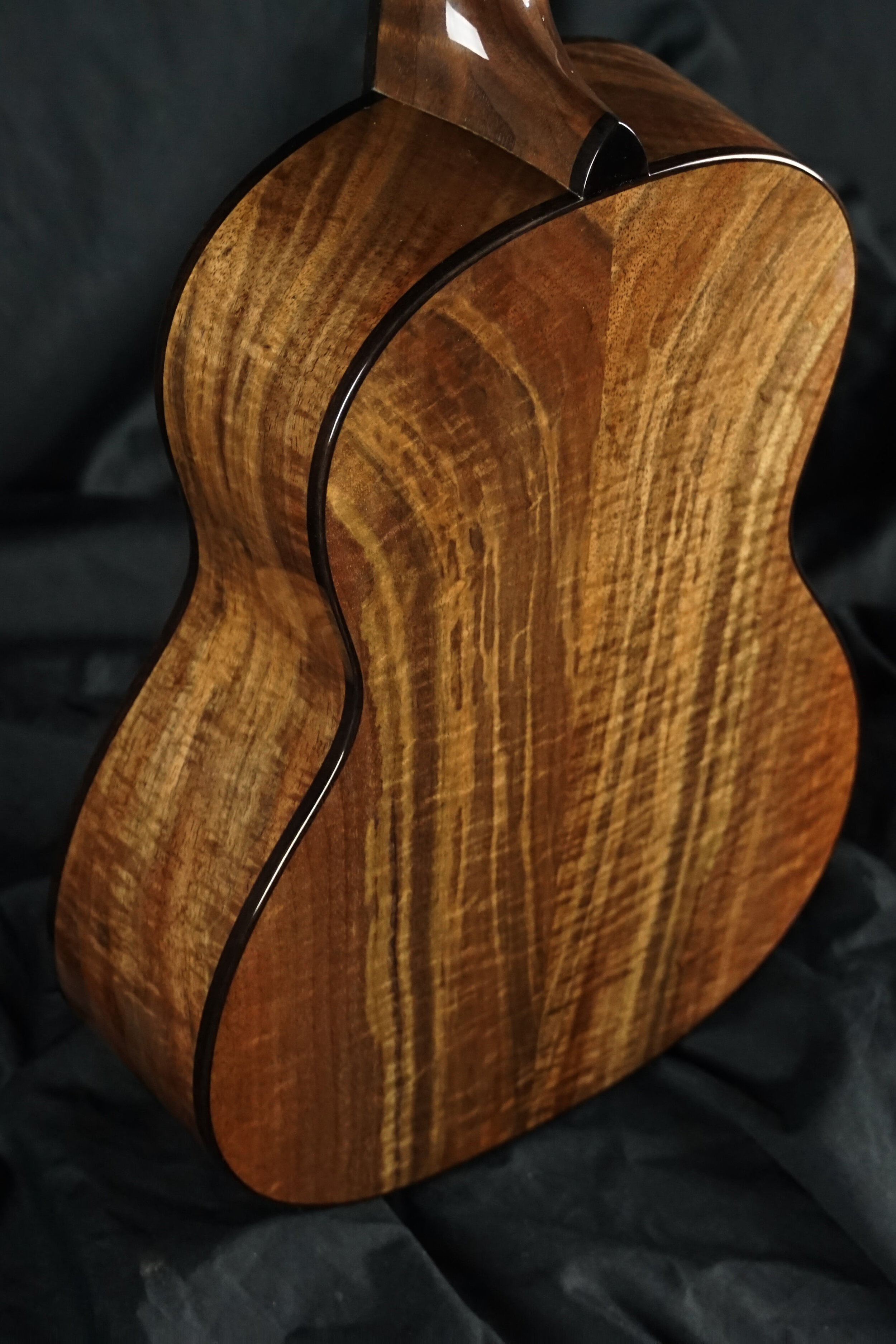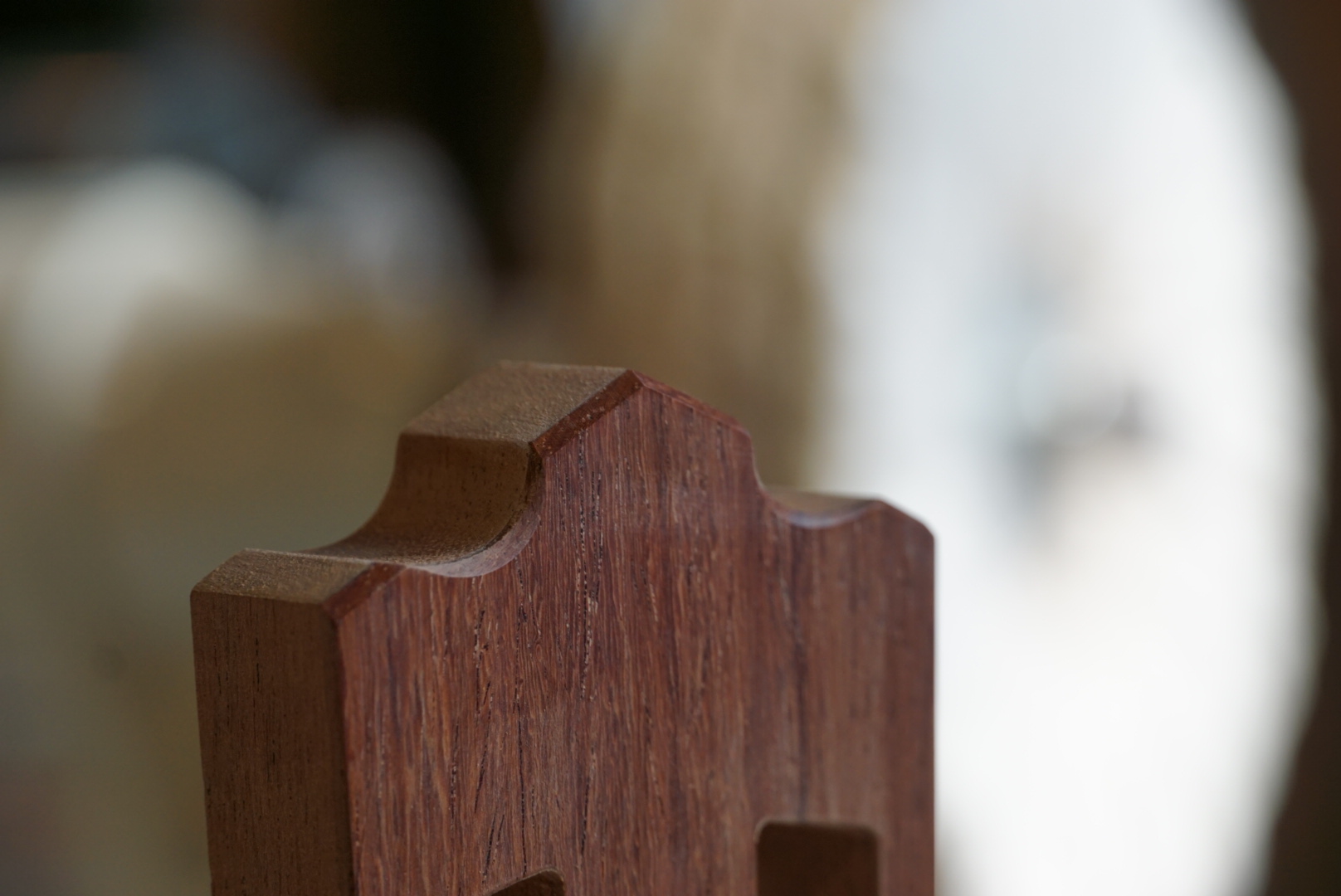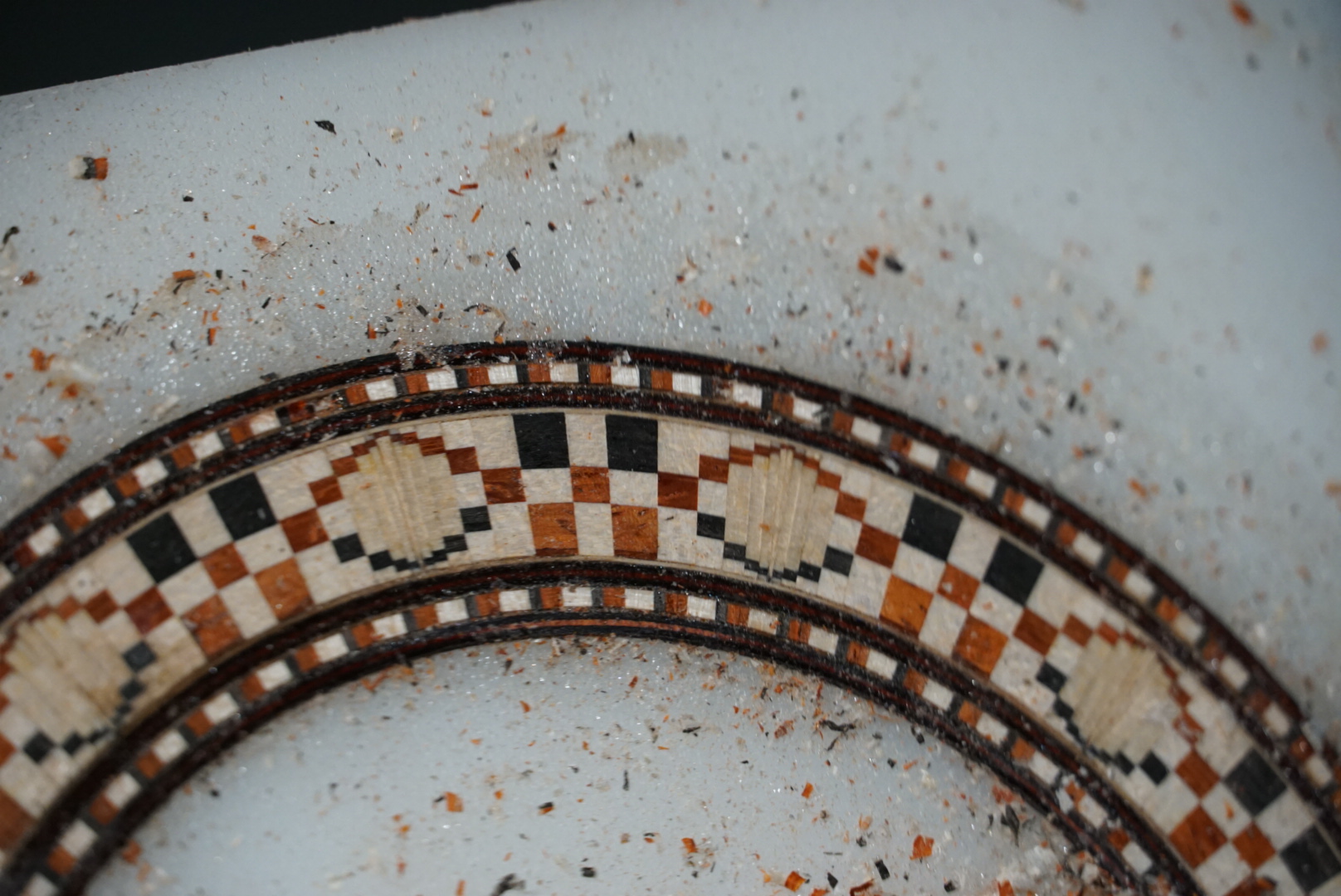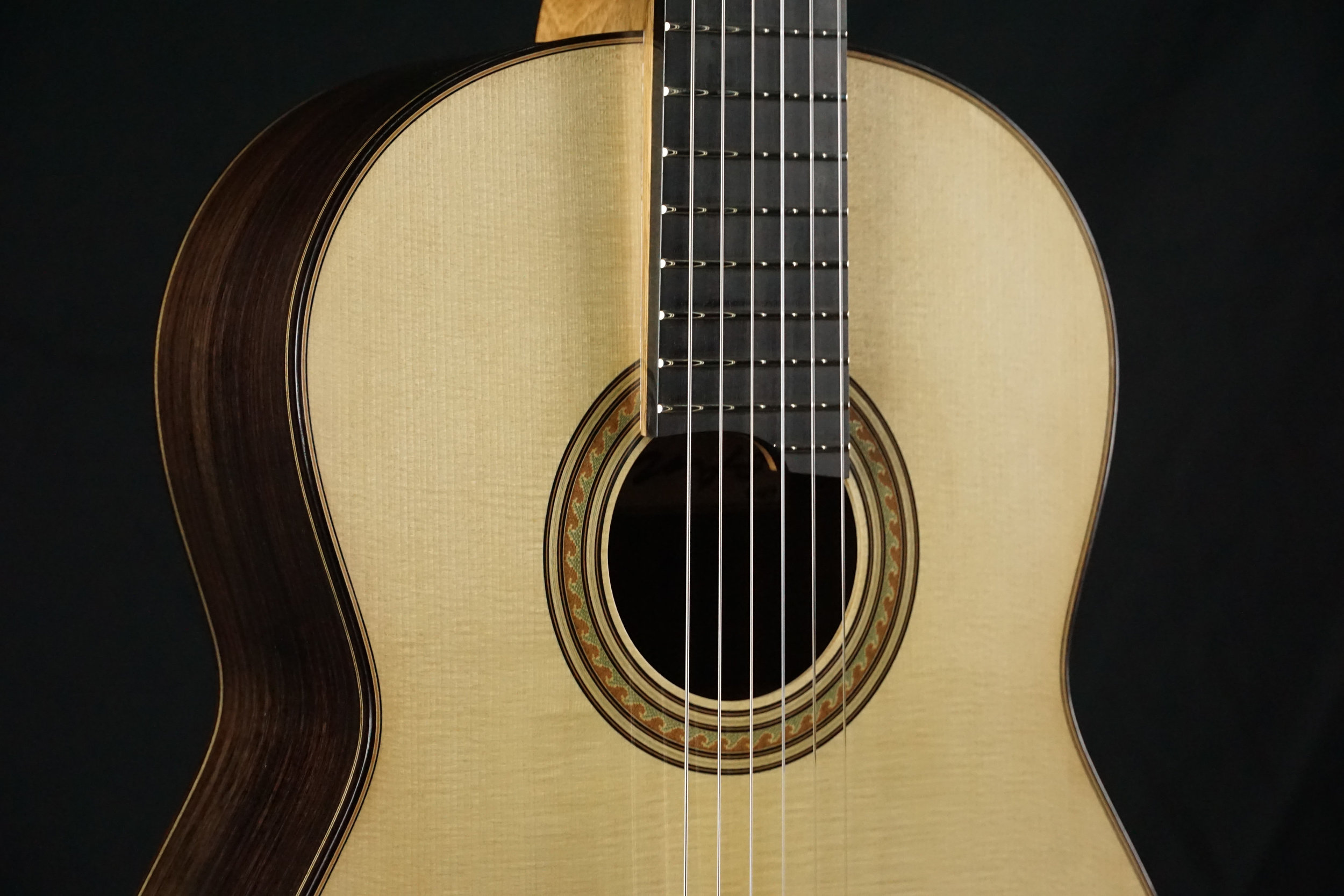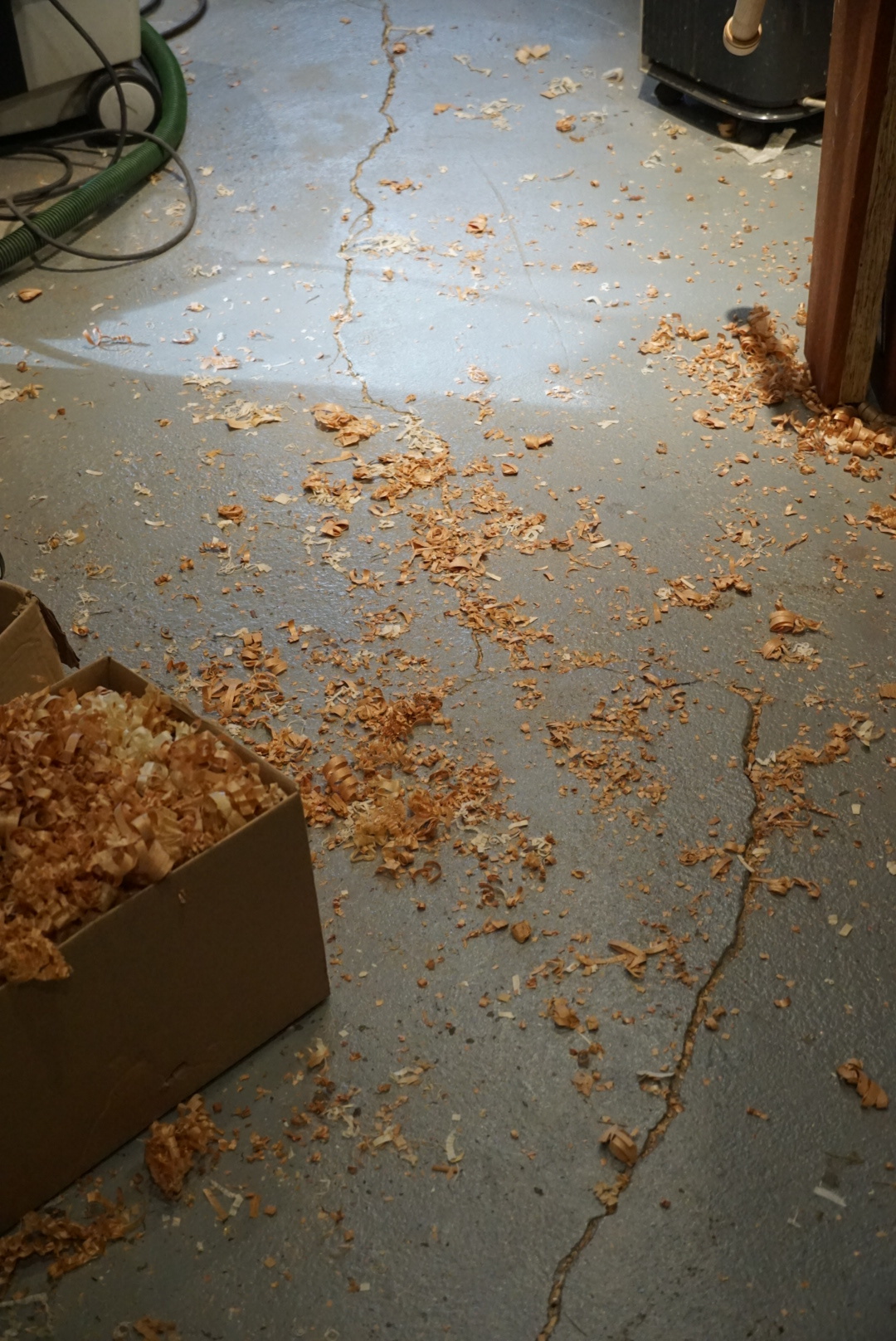No one is actually going out but this guitar is ready to!
This classical guitar is one of the most dressed up instruments I’ve done in a while and it includes a new eighteen hole bridge; which is a first for me. It is an interesting change that makes the top of the tie block a completely decorative element. Usually, the block is bordered in bone to keep the strings from damaging it but with no strings wrapped over the top we were free to adorn it as we saw fit. With the added holes, a veneer of bone was glued to the back of the block for added strength. I also did a more traditional bridge shape so I’m not completely sure if the new tieblock adds any weight. I think it may be a gram heavier than if I had done a standard tieblock.
The back and sides are Macassar Ebony and the top is a torrefied Western Red Cedar. There is a rope / wheat purfling motif carried around the body, rosette, headstock and tie block. It has its customer specific neck dimensions which include a wider than standard nut and a 660 mm scale length on an elevated fingerboard. The longer scale paired with the other design choices make for a stiffer action and a good amount of headroom. I feel like I can really drive the top hard and the sound doesn’t break up. The frets are done in the EVO Gold fretwire up to the 20th fret and then the 21st fret (yes, we went there on a classical) is made of black buffalo horn that just fits on the end of the fretboard! To top that all off we put a gorgeous set of Scheller Tuning Machines with Baker style plates and Black Mother of Pearl buttons on it. I’m going to mail it out real soon so I’ll be excited to get the client’s reaction.





